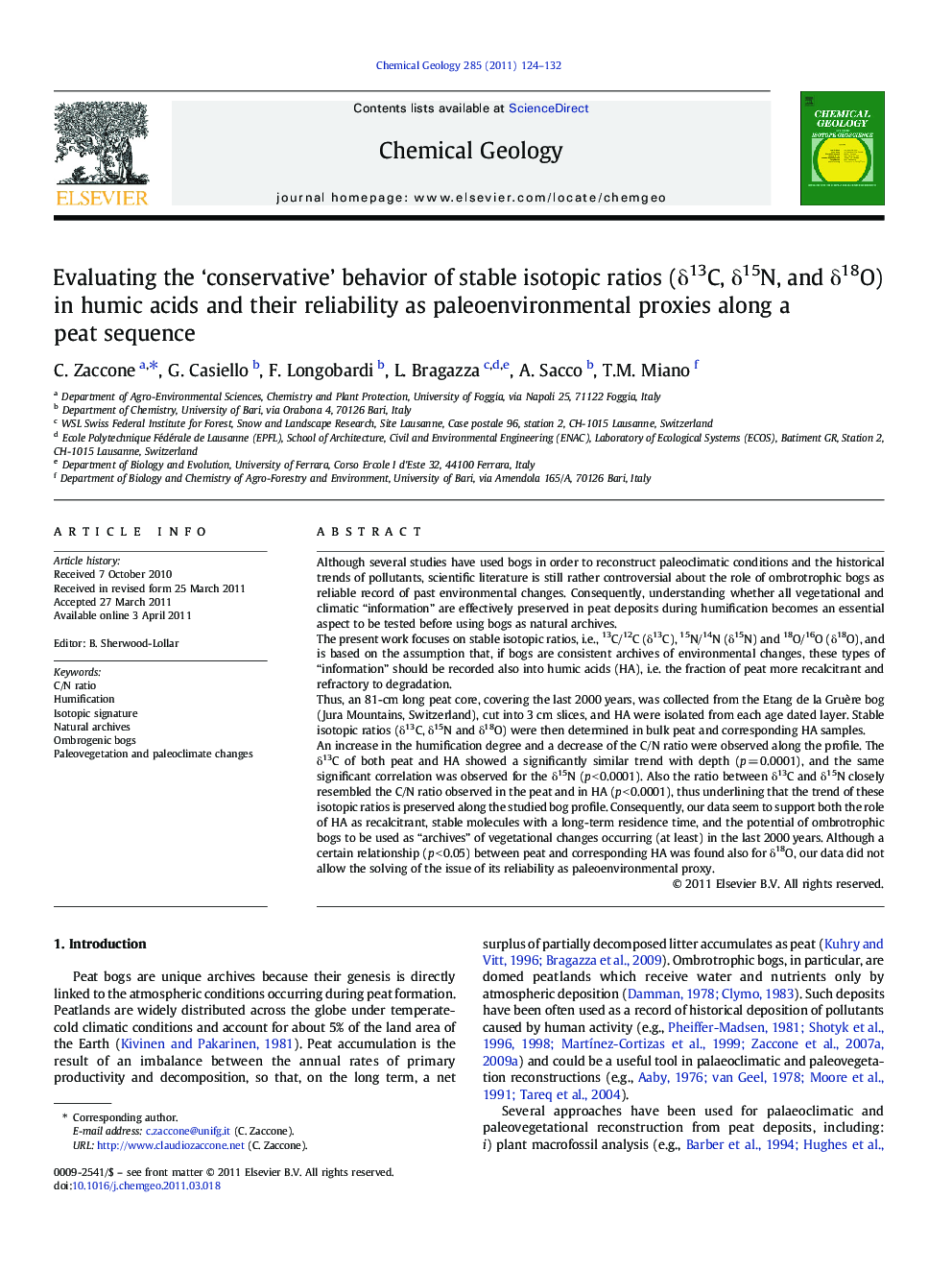| کد مقاله | کد نشریه | سال انتشار | مقاله انگلیسی | نسخه تمام متن |
|---|---|---|---|---|
| 4699676 | 1637666 | 2011 | 9 صفحه PDF | دانلود رایگان |

Although several studies have used bogs in order to reconstruct paleoclimatic conditions and the historical trends of pollutants, scientific literature is still rather controversial about the role of ombrotrophic bogs as reliable record of past environmental changes. Consequently, understanding whether all vegetational and climatic “information” are effectively preserved in peat deposits during humification becomes an essential aspect to be tested before using bogs as natural archives.The present work focuses on stable isotopic ratios, i.e., 13C/12C (δ13C), 15N/14N (δ15N) and 18O/16O (δ18O), and is based on the assumption that, if bogs are consistent archives of environmental changes, these types of “information” should be recorded also into humic acids (HA), i.e. the fraction of peat more recalcitrant and refractory to degradation.Thus, an 81-cm long peat core, covering the last 2000 years, was collected from the Etang de la Gruère bog (Jura Mountains, Switzerland), cut into 3 cm slices, and HA were isolated from each age dated layer. Stable isotopic ratios (δ13C, δ15N and δ18O) were then determined in bulk peat and corresponding HA samples.An increase in the humification degree and a decrease of the C/N ratio were observed along the profile. The δ13C of both peat and HA showed a significantly similar trend with depth (p = 0.0001), and the same significant correlation was observed for the δ15N (p < 0.0001). Also the ratio between δ13C and δ15N closely resembled the C/N ratio observed in the peat and in HA (p < 0.0001), thus underlining that the trend of these isotopic ratios is preserved along the studied bog profile. Consequently, our data seem to support both the role of HA as recalcitrant, stable molecules with a long-term residence time, and the potential of ombrotrophic bogs to be used as “archives” of vegetational changes occurring (at least) in the last 2000 years. Although a certain relationship (p < 0.05) between peat and corresponding HA was found also for δ18O, our data did not allow the solving of the issue of its reliability as paleoenvironmental proxy.
Figure optionsDownload as PowerPoint slideResearch Highlights
► Environmental change “information” seem to be preserved in peat during humification.
► The δ13C of both peat and HA showed a significantly similar trend with depth.
► The δ15N of both peat and HA showed a significantly similar trend with depth.
► 13C and 15N trends (and, in a lower extent, 18O) are quite preserved in HA from peat.
► Some small but significant shifts in absolute isotope values were observed in HA.
Journal: Chemical Geology - Volume 285, Issues 1–4, 22 June 2011, Pages 124–132